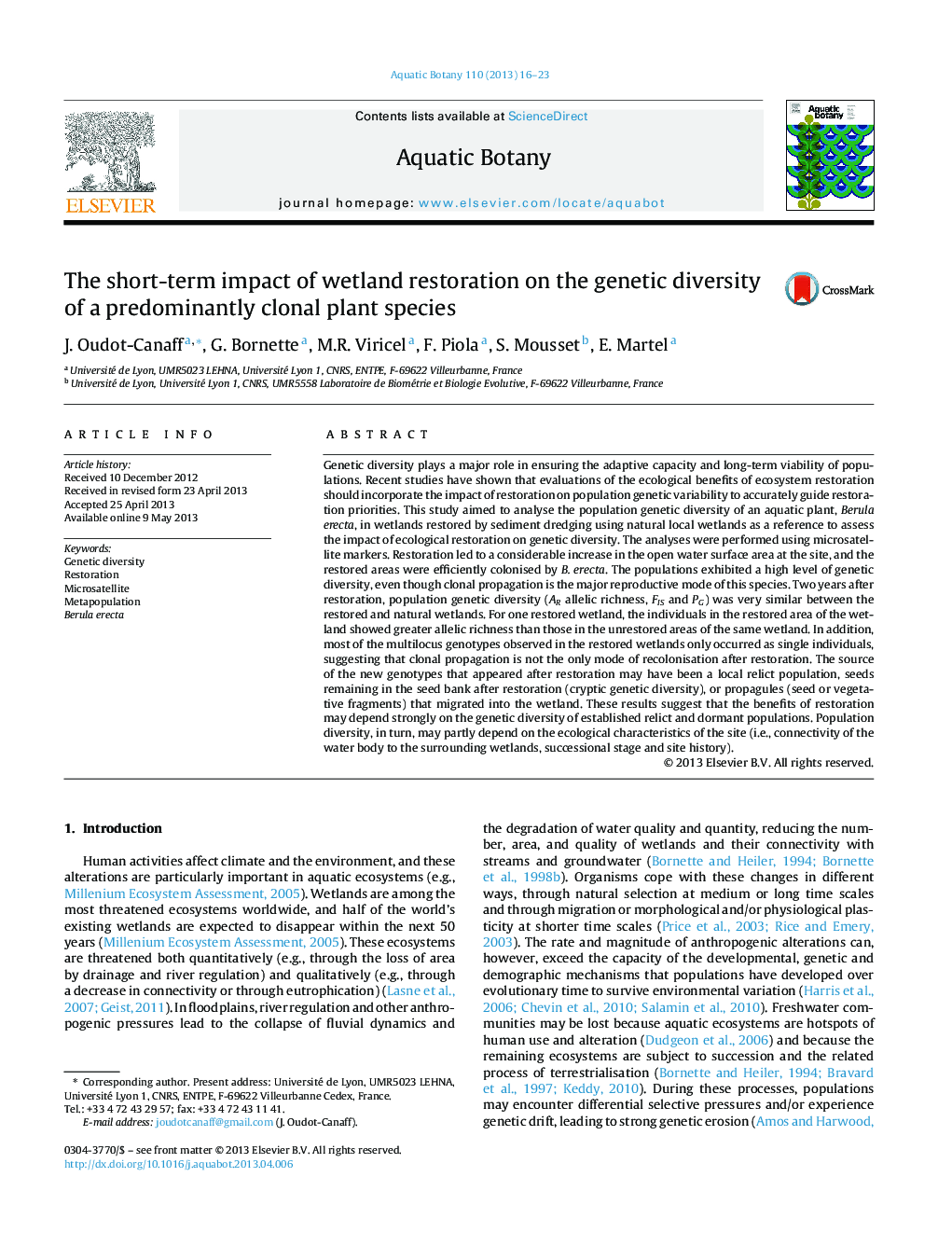| Article ID | Journal | Published Year | Pages | File Type |
|---|---|---|---|---|
| 6381747 | Aquatic Botany | 2013 | 8 Pages |
Abstract
Genetic diversity plays a major role in ensuring the adaptive capacity and long-term viability of populations. Recent studies have shown that evaluations of the ecological benefits of ecosystem restoration should incorporate the impact of restoration on population genetic variability to accurately guide restoration priorities. This study aimed to analyse the population genetic diversity of an aquatic plant, Berula erecta, in wetlands restored by sediment dredging using natural local wetlands as a reference to assess the impact of ecological restoration on genetic diversity. The analyses were performed using microsatellite markers. Restoration led to a considerable increase in the open water surface area at the site, and the restored areas were efficiently colonised by B. erecta. The populations exhibited a high level of genetic diversity, even though clonal propagation is the major reproductive mode of this species. Two years after restoration, population genetic diversity (AR allelic richness, FIS and PG) was very similar between the restored and natural wetlands. For one restored wetland, the individuals in the restored area of the wetland showed greater allelic richness than those in the unrestored areas of the same wetland. In addition, most of the multilocus genotypes observed in the restored wetlands only occurred as single individuals, suggesting that clonal propagation is not the only mode of recolonisation after restoration. The source of the new genotypes that appeared after restoration may have been a local relict population, seeds remaining in the seed bank after restoration (cryptic genetic diversity), or propagules (seed or vegetative fragments) that migrated into the wetland. These results suggest that the benefits of restoration may depend strongly on the genetic diversity of established relict and dormant populations. Population diversity, in turn, may partly depend on the ecological characteristics of the site (i.e., connectivity of the water body to the surrounding wetlands, successional stage and site history).
Related Topics
Life Sciences
Agricultural and Biological Sciences
Aquatic Science
Authors
J. Oudot-Canaff, G. Bornette, M.R. Viricel, F. Piola, S. Mousset, E. Martel,
